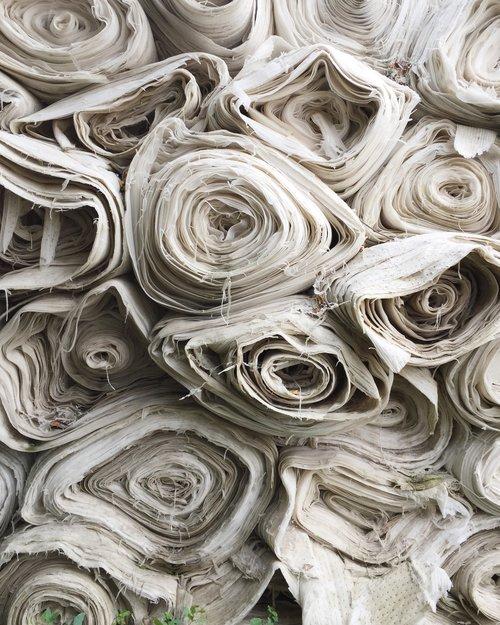Deadstock fabrics are quite literally as their name says! They might have been from a large order that didn’t need the amount they ordered, they may be the remnants of a previous production or they might even be a fabric order that the client didn’t want in the end!
There are 1000's and 1000's of metres of deadstock now sitting in warehouses and factories all around the world. Waiting for the day they get taken to landfill.
Not only do they get thrown into warehouses, according to Timo Rissanen*, around 15% of fabric intended for clothing ends up on the factory floor.
The possibilities of creations are endless with deadstock fabrics
Deadstock fabrics are just like any other fabrics. They can be used to produce beautiful garments and interiors, except it is a much more sustainable option.
When purchasing deadstock, you make a difference
By purchasing deadstock fabrics you’re stopping them from filling landfill sites around the world, which helps makes the clothing and textile industry the second largest polluter in the world(after oil).
By saving these fabrics from being destroyed, you're also reducing the water needed to produce even more new fabrics. It’s estimated that it takes 20,000 litres of water to produce one kilogram of cotton; the equivalent to a single t-shirt and pair of jeans.
In normal terms, 20,000 litres of water is roughly around 80,000 glasses of drinking water!
Deadstock on trend
With the population becoming more conscious about their carbon footprint and how they will leave the world for the next generation, it takes someone to set a precedent. With big name labels such as Christopher Raeburn and Christoph Rumpf both using deadstock in their collections, this is setting a great example and showcasing just what can be done with these forgotten fabrics.
It’s estimated that by 2030 the fashion waste is expected to increase to a 148 million ton problem. Now is the time to help make a difference, so what will you make?
*Timo Rissanen, “From 15% to 0: Investigating the creation of fashion without the creation of fabric waste”. Presenter, Kreativ Institut for Design og Teknologi, September 2005.



